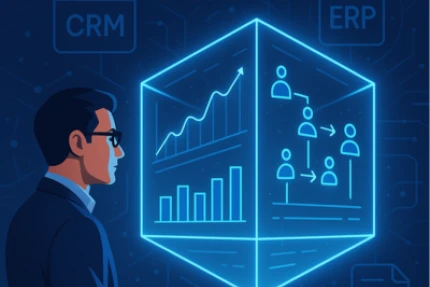
The year 2024 is seen as a pivotal time for efficient growth in SaaS. The emphasis on carefully considering additional finance tools, automating processes, and maintaining a lean yet effective technology stack resonates across the CFO community. In a recent series of roundtables focused on the “Modern Finance Tech Stack”, SaaS CFOs dove into their go to finance technology and various implementation experiences. During the discussion, a few key themes stood out and have been summarized below.
The Resilience of Spreadsheets
Specialized financial planning and modeling tools are on the rise. Particularly, SaaS CFOs navigate a sea of options designed to streamline financial operations, from FP&A tools to Subscription Billing to Equity Management.
Amidst this surge, a notable paradox emerges — the enduring preference for spreadsheets. In fact, several CFOs highlighted the resilience and bespoke nature of Excel in their daily operations, supporting unique budget models, tracking intricacies, and aiding in complex integration during mergers and acquisitions.
A divergence of opinion arises regarding Excel versus Google Sheets as the preferred spreadsheet tool. While Excel is hailed for its powerful capabilities and familiarity, some CFOs express a preference for the collaborative aspects of Google Sheets. Lauded for effective data sharing and collaborative data management, Google Sheets fosters efficient, real-time communication within an organization.
Platform Integrations and Financial Data Consolidation
Seamless integration and consolidation emerged as cornerstones for CFOs navigating modern financial operations. The need for technologies to integrate into a cohesive ecosystem is underscored by the diverse array of function-specific tools, such as the CRM, Marketing Automation, Accounting, and Invoicing systems. CFOs, especially those overseeing global operations, highlight the necessity of integration.
Consolidation tools, particularly in discussions around Business Intelligence solutions, become crucial in this ever-growing SaaS landscape. While traditional BI tools require the expertise of data analysts, new age, no-code BI tools offer a more cost-effective solution to company-wide performance analytics. This new approach is quite appearing to SaaS CFOs looking to drive efficient spend. However, many CFOs note that these consolidation tools must offer an elevated, hands-on customer service experience that can compare to internal data analysis resources.
Finance Tools Efficiency: Leading by Example
Budget efficiency takes center stage as CFOs adopt strategic measures to minimize tech spend while ensuring optimal performance. Approaches include scrutinizing the tech stack for cost-effective alternatives and advocating for lean, yet effective solutions.
CFOs navigate the challenge of balancing substantial investments in sales technology, such as Salesforce and Gong, with a prudent approach towards financial tech spend. While industry research from Jeremey Donovan of Insight Partners suggests that companies should target spending $10,000 – $15,000 per sales rep per year on sales technology, conversations with SaaS CFOs suggest that many are spending 4-10x that amount.
Many CFOs are committed to leading by example, spearheading initiatives to minimize finance technology expenses. This involves optimizing existing, cost-effective tools like Excel and Google Sheets, while carefully considering the ROI of additional tools. The overarching goal is to implement lean, yet efficient finance tools that align best with the organization’s growth objectives.
Conclusion: What does the Modern Finance Tech Stack Actually Look Like?
While not an exhaustive list of the many finance tools available to SaaS CFOs, below are the modern finance technology solutions mentioned during the roundtable discussions, with important highlights noted.
Customer Relationship Management (CRM):
- Salesforce
- HubSpot – “Cost effective alternative to Salesforce”
Accounting / ERP / General Ledger:
- Netsuite
- QuickBooks
- Sage Intacct
- Xero
- Pennylane – “Modern alternative to legacy accounting systems”
- AccountsIQ – “Good lightweight alternative to NetSuite”
- Quadra
- AccountingSeed
Consolidation Software / Business Intelligence (BI) / Metrics Tracking:
- Discern – “Easy implementation with better analytics and reporting capabilities”
- Looker
- Tableau
- Staria
- BlackLine
- ChartMogul
Equity Management:
- Carta
Payroll:
- Justworks
- Paylocity
Accounts Payable:
- Bill.com
- Glean.AI – “Cost-effective”
Expense Management:
- Expensify
- Concur
- Spendesk
- Clippa – “Used for scanning receipts”
Financial Planning & Analysis (FP&A):
- Planful – “User-friendly and integrates well with NetSuite”
- Mosaic
- Vena
- ProfitSword
- Anaplan
- Adaptive (Workday)
- Team Ohana – Headcount Planning
- Excel / Google Sheets
Invoicing Systems:
- Chargebee
- Zuora
- Maxio
- Hyperline – “Copycat of Chargebee at lower cost”
As SaaS finance technology options continue to grow, modern finance leaders must be diligent in their technology selection process, with an emphasis on ROI and success criteria.



